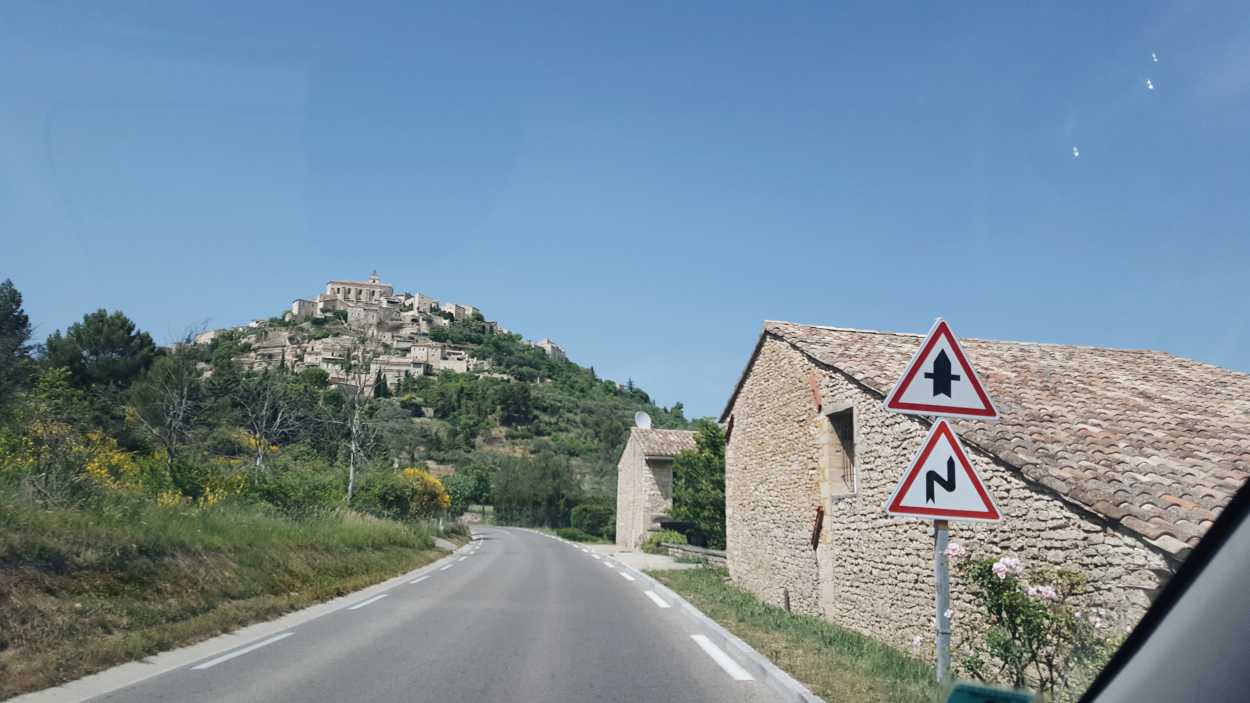“Oh, and by the way, there is a fuel shortage due to a strike and you may have trouble filling your rental before you return,” the car rental associate explained after the papers were signed and the keys were in our hand.
Michael and I looked at each other, relaying our horror without words. This was only our third time renting a car ever, and our second time renting out of the U.S. (the first was in Aruba, which may or may not count since it’s an island), and this was the cherry on top of an already rough day.
This post may contain commissionable links
Our day should have been seamless – we’d arrived in Avignon the evening before and planned to pick up our car around 10:00 a.m. We made our way to the city center, where we’d planned to board a train to the larger TGV station only 4.5 km away. With extra time to spare, we popped into the Tourist Information Office to ask a quick question before heading to the station.
“You know there is a strike?” the clerk asked. Yes, of course we’d heard, though we weren’t sure how much it would affect our travels, as we were just about to pick up a rental car. She handed us a list of all trains running that day and the one we’d planned to take was not listed. Though we thought we we early, the reality was we had just missed the last train for two hours.
“Is there another way to get to the station?” we asked.
“You can take the bus here,” she said, pointing to a map. “You will walk outside of the city walls and turn right, and there is the bus stop. Your bus arrives in three minutes.”
We heeded her advice and hustled to the bus stop, where we confirmed that the correct numbered bus, going in the right direction, would stop. Luckily, there was a digital screen indicating the next bus would arrive in one minute.
“We made it!” I exclaimed.
We watched as the sign indicated the bus was arriving. No bus came. Then the sign stated the next bus would arrive in twenty minutes.
This was the point where I began to get flustered. “Twenty minutes?!” I asked, incredulously. Michael calmed me down and we waited.
“Okay, it says arriving.”
Nothing. Not one bus numbered like the one we were looking for pulled up to the stop.
We asked others in our terrible French if we were at the right place. They confirmed, and so we waited some more. Another twenty minutes passed, and our bus still never showed.
“Do we take a cab?” I asked.
“We don’t have enough cash,” Michael replied, “we can see if someone will take a card.”
No taxis would take our card. We found another couple who were going to the same station, and we asked if we could split the cost of the ride. “Umm, I don’t think he has enough room,” the lady said, despite the vehicle clearly having enough space.
Defeated, we went back to our bus stop and contemplated making the hour walk to the station – but ultimately decided against it as our walk would get us there at the same time as the train, and we didn’t know how safe the roads were for pedestrians. Other buses were stopping in the meantime, and locals were boarding and exiting. Finally, one woman waiting on a bench stood, and behind her, we could see a taped-up sign.
Despite our alarmingly bad French, we understood this sign indicated a service change and that the bus would not be stopping at our stop but at an alternate stop. We confirmed our translation of the sign in Google Translate and shared this information with others who had been waiting for the same bus. Though they were hesitant to trust us, we all gathered our things and walked over to the correct stop together. To add insult to injury, the temporary bus stop was only 300m away, but just beyond our eyesight due to a curve in the road.
Finally, finally, we boarded our bus and paid for the ride. The air-conditioned bus ride helped calm our nerves a little, as the fate of our journey was no longer in our hands at this point.
We were calm, that is, until our bus swiped a car coming in the opposite direction. We arrived at the TGV station a few minutes before the train that was scheduled to arrive two hours after we’d planned to leave. Additionally anxious that our car was somehow rented out from under us even though we’d pre-paid, we were glad to find that it was still on the lot.
Ultra-prepared, we’d pre-booked our car through AutoEurope and brought all necessary documentation with us, including our passports, Michael’s US Driver’s License, Michael’s International Driving Permit (purchased for $20 at our local AAA), and rental car voucher. Helpfully, the clerk spoke perfect English and walked us through the paperwork.
The price for our three-day rental was about USD 170, which felt high, but not unusual for an automatic and a one-way rental. To save even more, we brought our own GPS and installed offline maps on our phones, and so declined to rent the one through the rental agency that the clerk was pushing (of course, immediately after declining he let us know that the car was equipped with a GPS anyway).
And then he added, “Oh, and it has 7km! You’ll be the first drivers,” clearly delighted.
“Oh my God.” We both looked at each other. We’d already been back and forth over what (if any) insurance to buy. Neither of our US insurance policies covered overseas driving. I poured over stories on the internet and could not come up with a decision. We’d gone back and forth for weeks and sort of decided to buy the middle-of-the-road policy but left the ultimate decision up until the last minute.
Immediately our minds were made up: we wanted all of the insurance.
Not only were we in a brand new car with no one else to blame any dings on, but we’d seen the way the French drive and our bus just hit a car ten minutes ago and no one blinked an eye. No way were we planning on paying for someone’s delayed braking or poor parking.
So… we ended up spending USD 500 on a three-day car rental (but that peace of mind? Priceless).
And then we were told to bring it back full, or we would be charged an exorbitant amount in refueling fees. And that there was a fuel strike.
Feeling completely stressed and on the verge of tears (well, at least I was), we got in the car. We must have sat in the vehicle for thirty minutes, trying to comprehend what had just happened in the last few hours (the rental people probably thought we were nuts, sitting in the car park for no apparent reason).
Eventually, we figured out the car settings, and despite the car’s reluctance, got the GPS to speak to us in English (in an Irish accent, but hey, in English at least!). Hours behind on the day’s itinerary, we hit the road for Arles, and the Provencal countryside worked its magic at erasing tension.
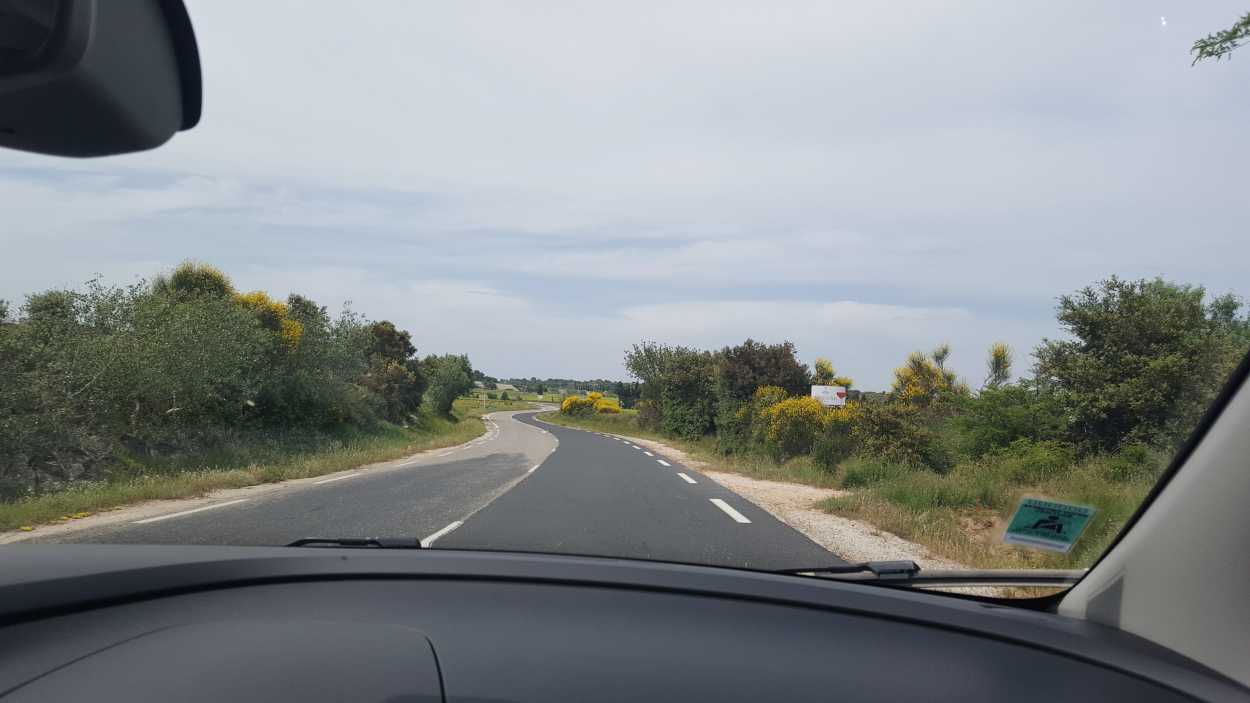
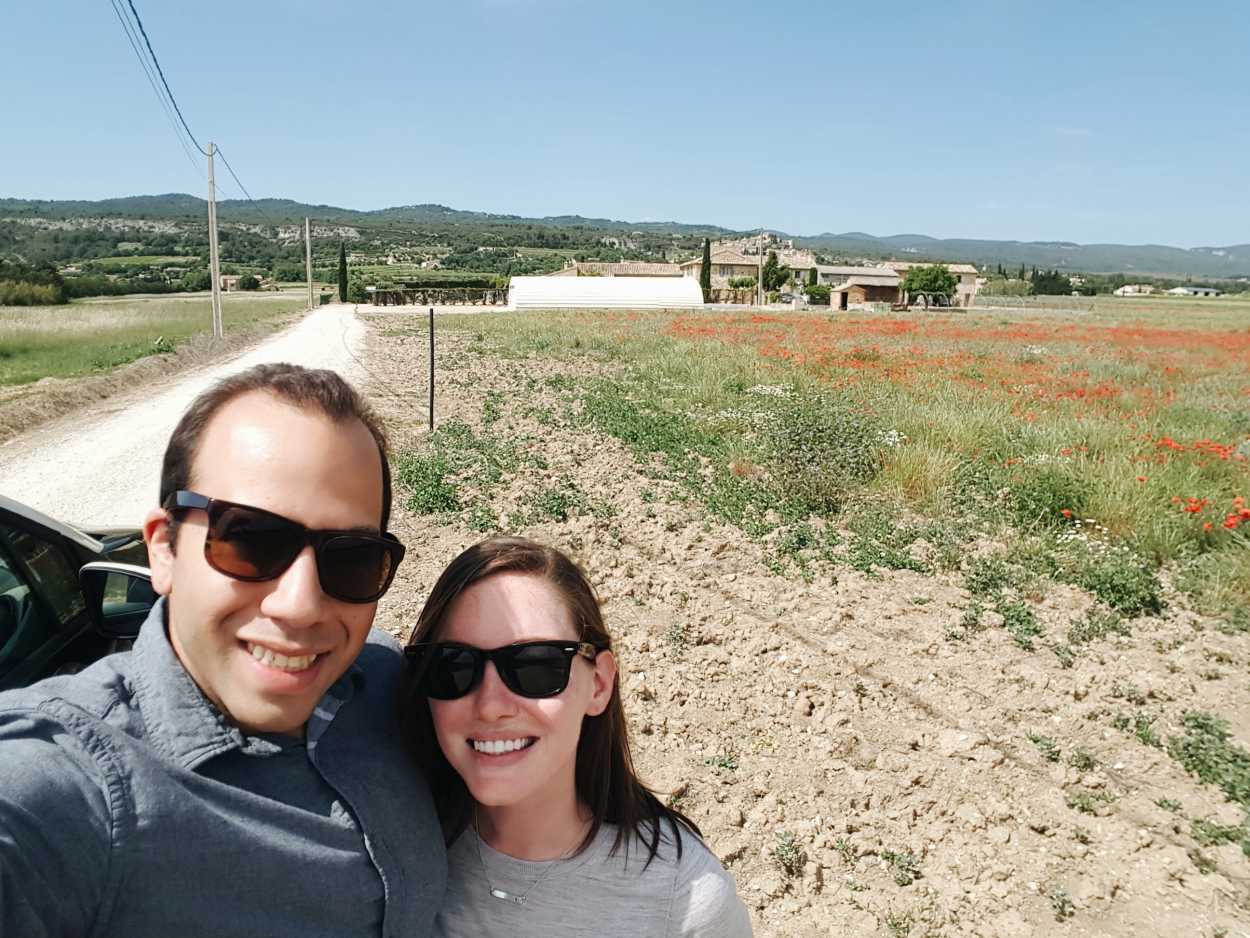
One thing we learned before leaving for France is that the country is very strict on their speeding laws, ticketing for going over by just a few kilometers per hour. In addition to that, not every road has a speed posted. Meaning, you are just supposed to know what the speed limit is based on what kind of road you are currently driving on. To two Americans who are used to seeing speed limit signs everywhere, this seemed completely absurd.
We were very fortunate to find that our GPS indicated the speed limit on most roads and followed its statements dutifully. We never saw any cops out clocking drivers, but we did see many speed detection devices. Locals know where these devices are hidden and will speed through areas without them (and they expect you to do the same), slamming on their brakes when they know they are close to one. We always kept to the speed limit, or under, to avoid receiving a ticket in the mail several months later.
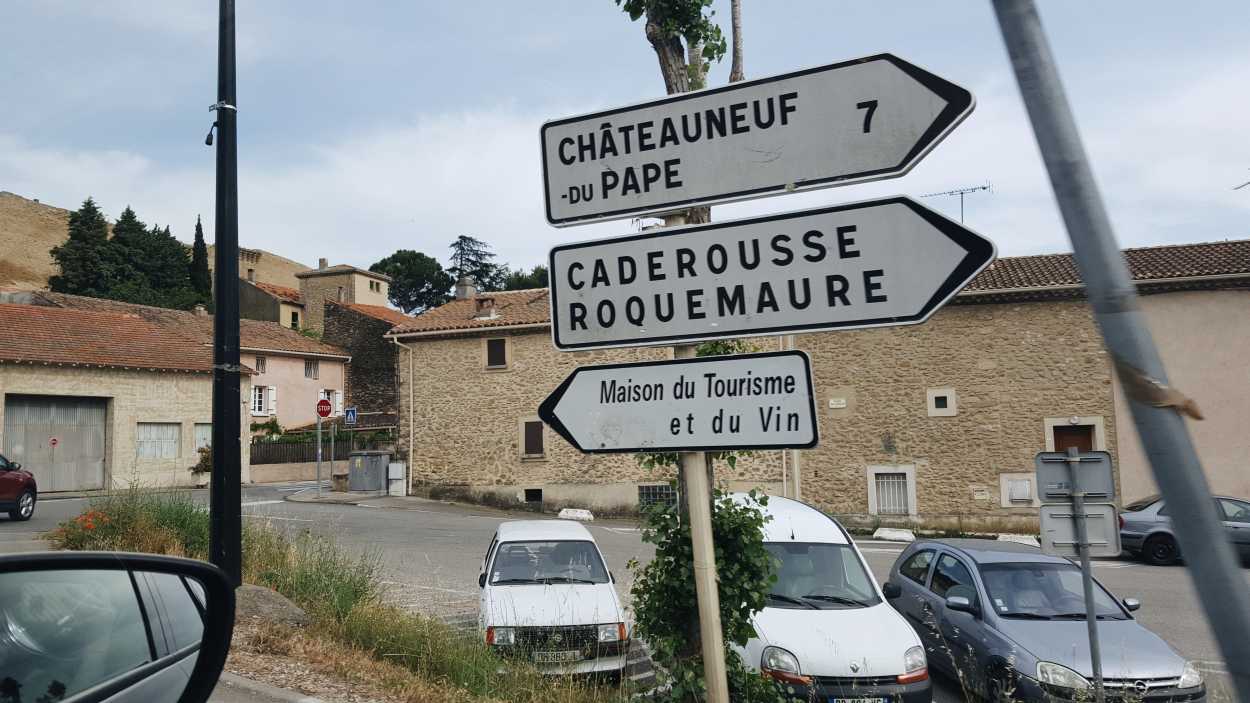
Despite the handy GPS, I almost always act as the navigator and kept a list of the different road signs handy on my iPad, which I was sure to download before leaving (helpful information can be found here and here). For the most part, Michael found driving in France similar to driving in the U.S., with the exception of the absurd “Priorité à droite” law.
A detailed guide can be found here, but essentially unless indicated otherwise, a car approaching from the right has priority. Not just at intersections with stop signs, but at all intersections unless otherwise indicated. Most of the time there are signs posted canceling out this rule, but for an American driver, this rule is difficult to comprehend.
Other weird things we encountered involved roundabouts. We have roundabouts at home, of course, and the ones in France operate the same as the ones in the US (except for around the Arc de Triomphe, which we were nowhere near). But we encountered roundabouts with roads that intersected in the middle of the circle like an X, and even one roundabout with a traffic light inside of it.
We held our breath as we navigated these traffic circles; we’re still not entirely sure we went through them correctly. And then within the centuries-old towns, roads that looked like they were meant for only one car to pass at a time were actually two-way roads, with walls or buildings bordering the edges. One must have very good depth perception to drive in France.
We (somehow) made it through our three-day rental unscathed. We did struggle to locate a gas station that had fuel and managed to find one about thirty minutes away from our drop-off in Aix-en-Provence. In our efforts to refuel before returning, we discovered that one thing we hadn’t done before leaving was to learn how to use a gas station in France (we try to troubleshoot everything before we leave, but, you know, sometimes things fall through the cracks!).
We pulled into the station, which had a one-way entrance, and stopped at the pump. We looked for a place to insert cash or card, only to find… nothing.
Well, then we guessed that you must not prepay like here in the US, and then we tried to insert the pump’s nozzle into the vehicle. Nothing. We looked around, and everyone else seemed to have no issue. There was no chance we could sit and watch someone at the next pump as an example, as the cars behind us began honking their horns to leave (since we weren’t actually fueling our car, it looked like we were just sitting there). We had no choice but to give up and try again.
The flow of the gas station was a closed loop, so we pulled around to the pay station, where the cashier looked confused because we didn’t use any fuel. She explained to go back around and try to pump again, so we did.
Again, nothing.
By this time, the staff at the pay station had swapped, and we were met with a man who didn’t speak any English. We used Google Translate once more (honestly, without it, we may as well just stay home!) and he sent us back through.
I’m still not sure what the magic trick is, because we again just tried pumping gas like usual, but it worked. We filled up, pulled through to the pay station, and hit the road again, driving gently to not waste too much fuel.
Thankfully our brand-new vehicle was also a hybrid, which mean the fuel level stayed at the full mark. When we returned the car, the clerk asked suspiciously where we filled up, as nowhere nearby had fuel. “Up the road,” we responded. She pressed for more information, but we told her we weren’t familiar with the area and just filled up “up the road.”
So was it worth it? Was it worth the stress and hassle of getting the car, paying $500, locating parking, learning new road signs, and finding fuel? 100%, wholeheartedly, yes.
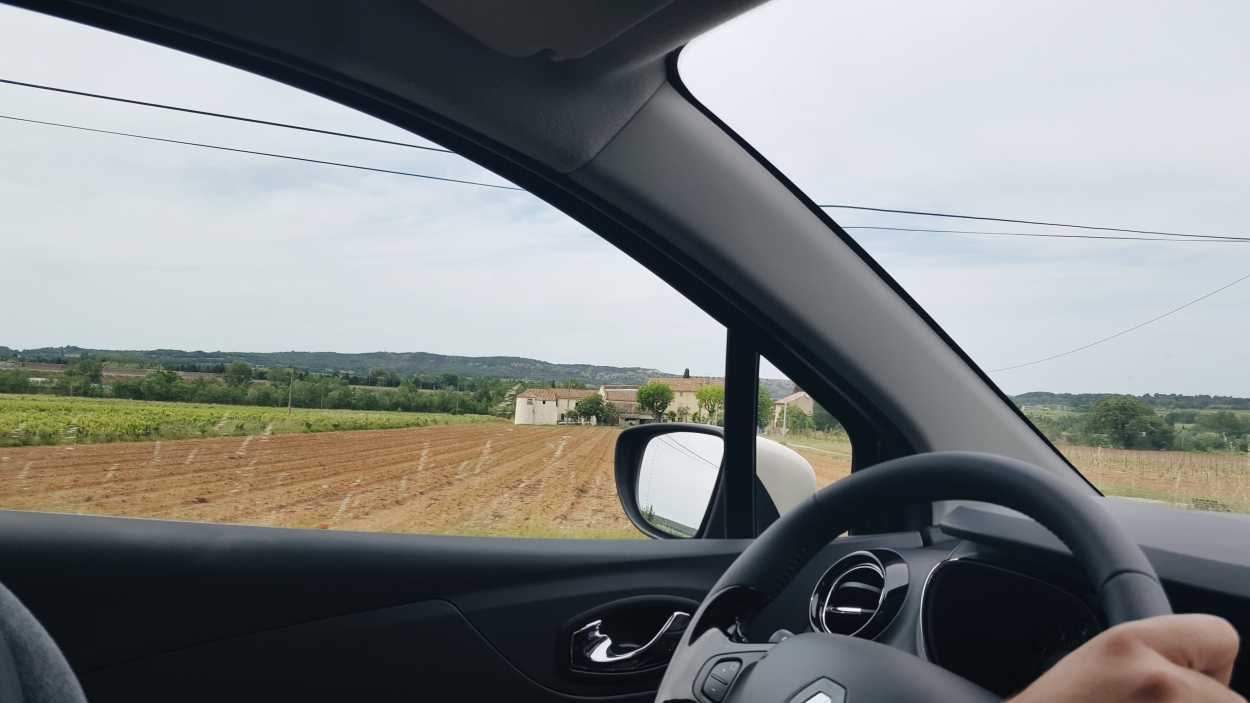
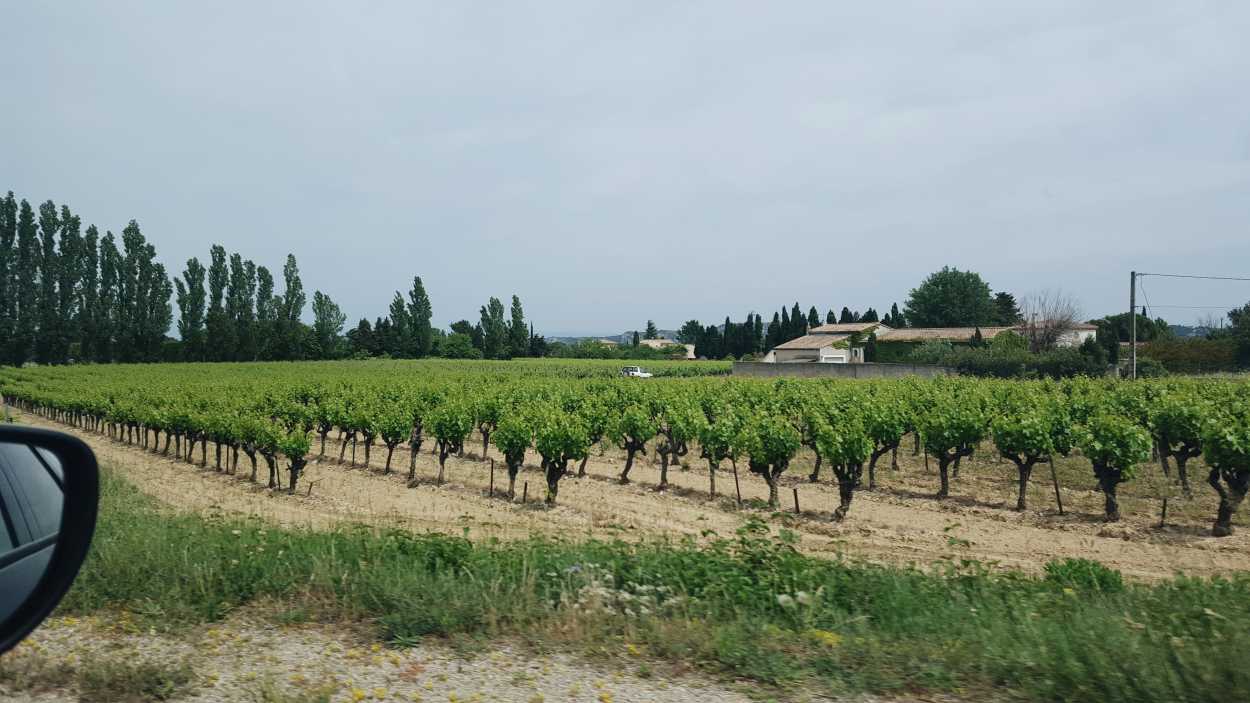

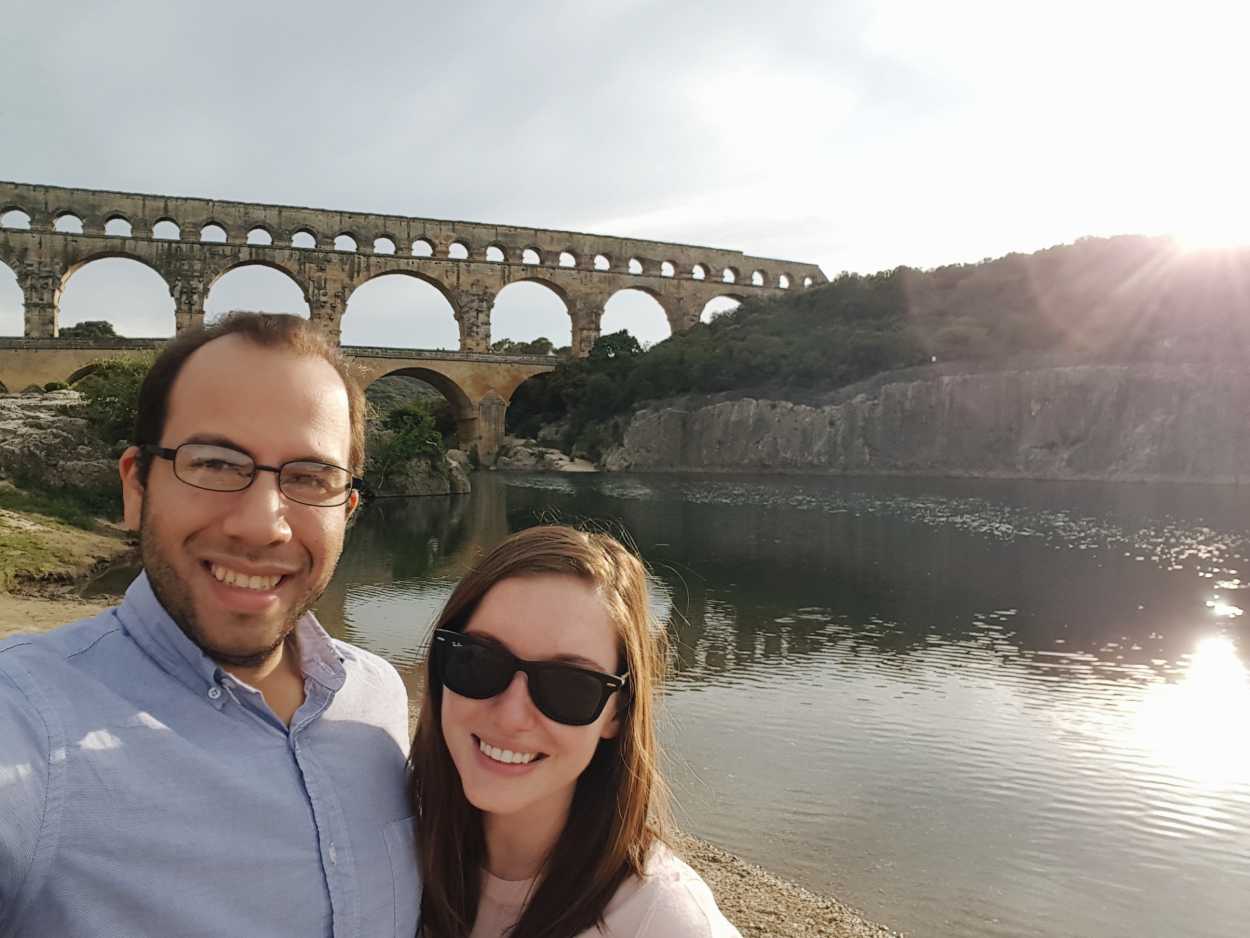
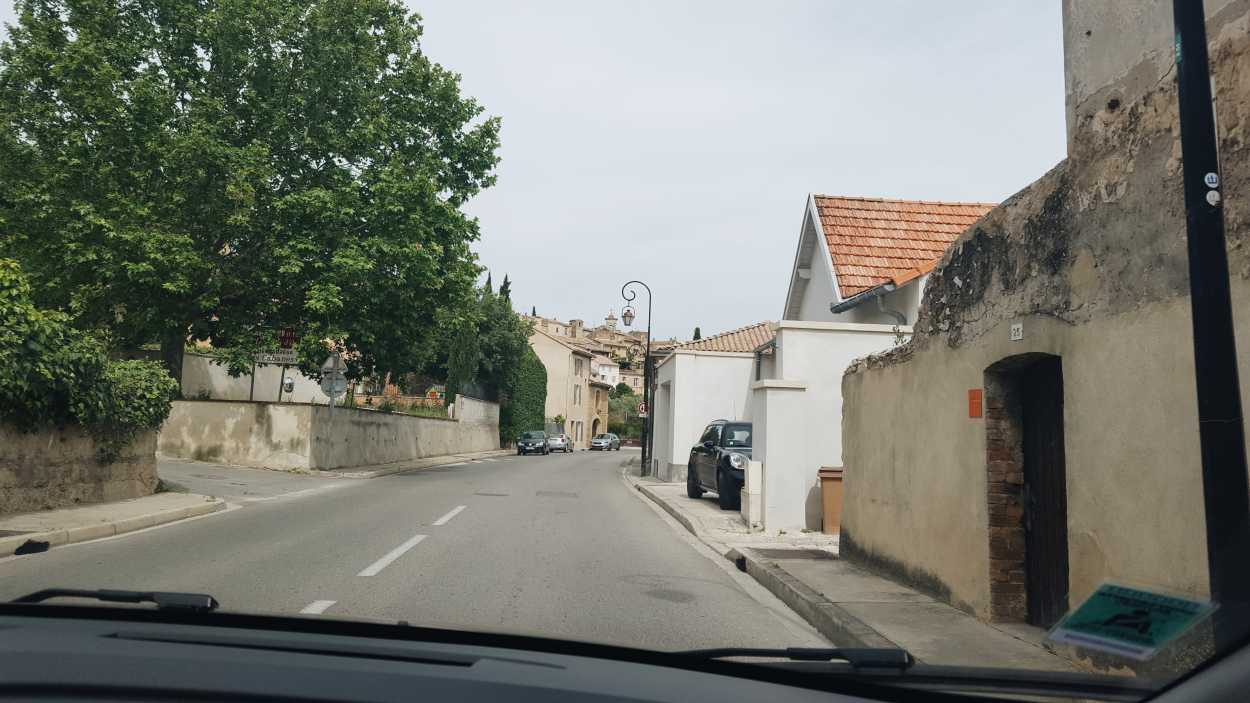
A car is not necessary for visiting Paris or Nice or some of the other cities we’ve visited. However, without a car, we would not have been able to meander through the Provençal countryside, buy cherries still warm from the sun on the side of the road, taste wine in well-known regions like Tavel or Chateauneuf du Pape, or visit sites like the Pont du Gard. We very rarely rent vehicles when we travel, but when we return to this region (or regions like this) we will opt for a car.
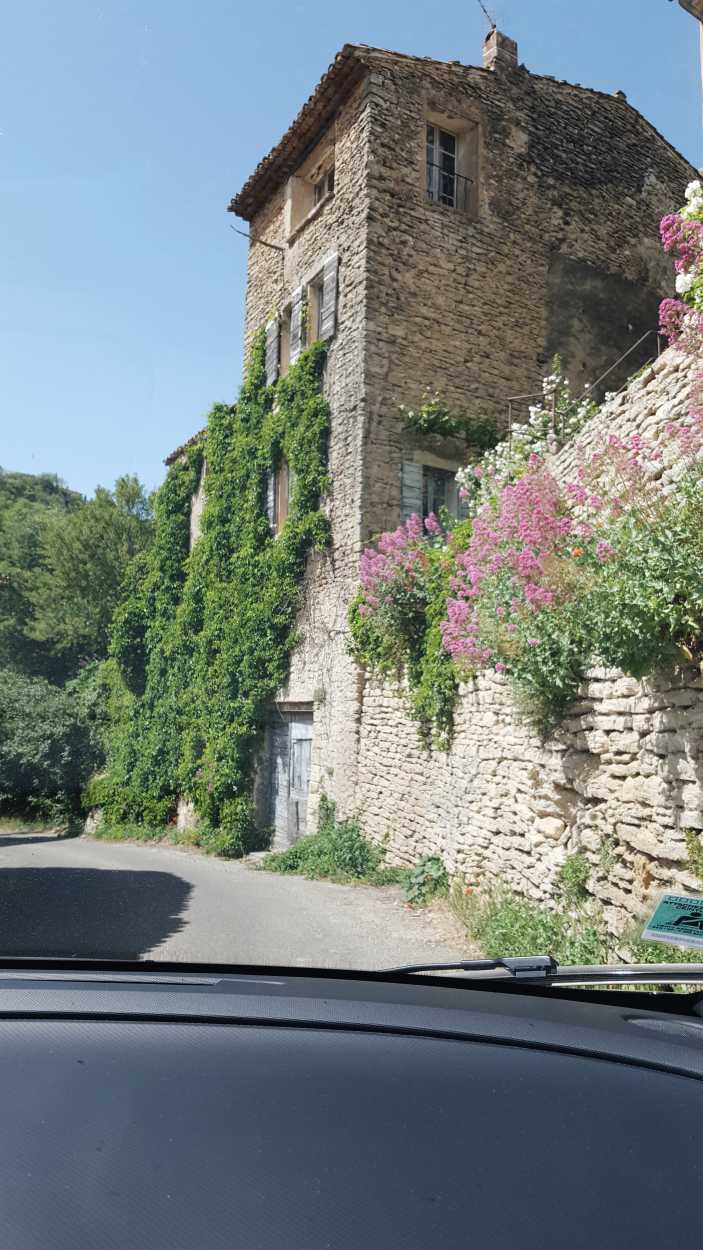
Enjoyed this post? You may also like:
- My Favorite French Beauty Finds
- A Relaxed Approach to Barcelona, Spain
- 72 Hours in Madrid, Spain
- How to Spend Three Days in Brussels, Belgium
- Like a Fairytale: A Day Trip to Bruges, Belgium
- How to Spend a Few Days in Ghent, Belgium
- 36 Hours in Luxembourg City
- Shopping in Antwerp, Belgium: A Day-Trip Directory
- Traveling Light: Two Weeks in the Netherlands, Luxembourg, and Belgium Packing List
- How to Find Cheap Flights
- My Flight Got Canceled and All I Had to Wear Was This Dress
- How to Split Travel Costs When One Person Earns More Money
- All of My Travel-Inspired Recipes
- All Travel Guides by Destination
- Checking In: Hotel Reviews
- Shop My Closet
- Exclusive Discounts + Promo Codes
Have you ever rented a car overseas? How was your experience? Did anything surprise you?
